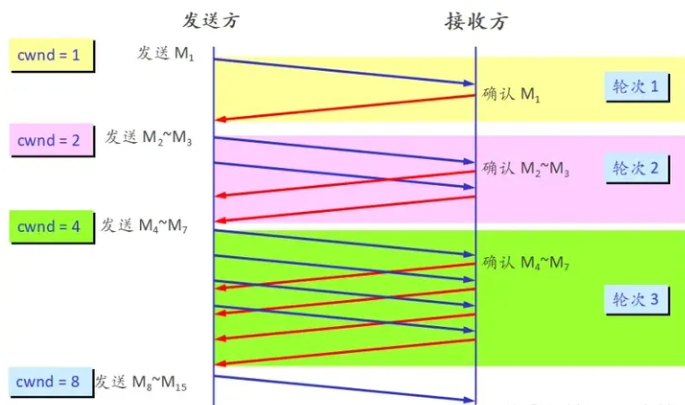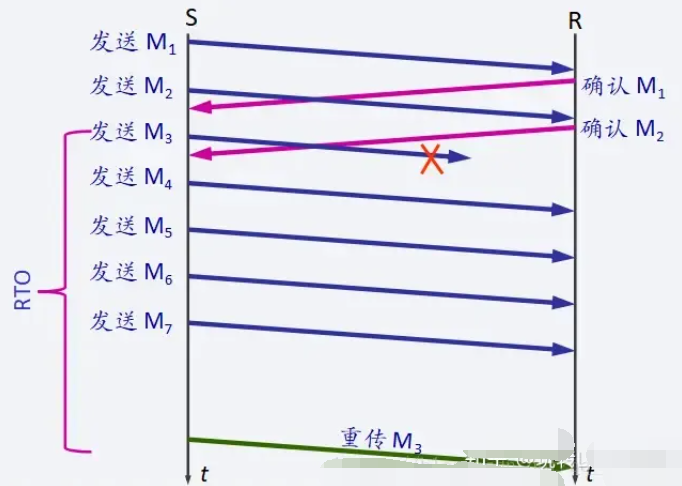其實不想用這個題目的,只因為TCP相關的東西比較吸引人的眼球,這篇文章的主題還是eBPF,而不是TCP。
用eBPF寫TCP擁塞控制算法只是本文所講內容的一個再平凡不過的例子。
先看兩個問題,或者說是兩個痛點:
內核越來越策略化。
內核接口不穩定。
分別簡單說一下。
所謂內核策略化就是說越來越多的靈巧的算法,小tricks等靈活多變的代碼進入內核,舉例來講,包括但不限于以下這些:
TCP擁塞控制算法。
TC排隊規則,數據包調度算法。
各種查找的哈希算法。
…
這部分策略化的代碼幾乎都是用“回調函數”實現的,這在另一方面烘托了Linux內核也是模塊化設計的,且機制和策略分離,當需要一種新的算法時,只需要register一組新的回調函數即可。
然而,…
然而不夠完美,因為上述第2點,“內核接口不穩定”!即每一個內核版本的數據結構以及API都是不兼容的。
這意味著什么?
這意味著,即便是高度封裝好的算法模塊代碼,也需要為不同版本的Linux內核維護一套代碼,當涉及內核模塊由于版本問題不得不升級時,數據結構和api的適配工作往往是耗時且出力不討好的。
但其實,很多算法根本就是與內核數據結構,內核api這些無關的。
兩個內核版本,數據結構只是字段變化了位置,新增了字段,更新了字段名字,即便如此,不得不對算法模塊進行重新編譯…
如果能在模塊載入內核的時候,對函數和數據結構字段進行重定位就好了!
我們的目標是,一次編寫,多次運行。
又是Facebook走在了前面,來自Facebook的BPF CO-RE(Compile Once – Run Everywhere):
http://vger.kernel.org/bpfconf2019_talks/bpf-core.pdf
沒錯,eBPF,就是它!
我們看下其描述:
BPF CO-RE talk discussed issues that developers currently run into when developing, testing, deploying, and running BPF applications at scale, taking Facebook’s experience as an example. Today, most types of BPF programs access internal kernel structures, which necessitates the need to compile BPF program’s C code “on the fly” on every single production machine due to changing struct/union layouts and definitions inside kernel. This causes many problems and inconveniences, starting from the need to have kernel sources available everywhere and in sync with running kernel, which is a hassle to set up and maintain. Reliance on embedded LLVM/Clang for compilation means big application binary size, increased memory usage, and some rare, but impactful production issues due to increased resource usage due to compilation. With current approach testing BPF programs against multitude of production kernels is a stressful, time-consuming, and error-prone process. The goal of BPF CO-RE is to solve all of those issues and move BPF app development flow closer to typical experience, one would expect when developing applications: compile BPF code once and distribute it as a binary. Having a good way to validate that BPF application will run without issues on all active kernels is also a must.
The complexity hides in the need to adjust compiled BPF assembly code to every specific kernel in production, as memory layout of kernel data structures changes between kernel versions and even different kernel build configurations. BPF CO-RE solution relies on self-describing kernel providing BTF type information and layout (ability to produce it was recently committed upstream). With the help from Clang compiler emitting special relocations during BPF compilation and with libbpf as a dynamic loader, it’s possible to reconciliate correct field offsets just before loading BPF program into kernel. As BPF programs are often required to work without modification (i.e., re-compilation) on multiple kernel versions/configurations with incompatible internal changes, there is a way to specify conditional BPF logic based on actual kernel version and configuration, also using relocations emitted from Clang. Not having to rely on kernel headers significantly improves the testing story and makes it possible to have a good tooling support to do pre-validation before deploying to production.
There are still issues which will have to be worked around for now. There is currently no good way to extract #define macro from kernel, so this has to be dealt with by copy/pasting the necessary definitions manually. Code directly relying on size of structs/unions has to be avoided as well, as it isn’t relocatable in general case. While there are some raw ideas how to solve issues like that in the future, BPF CO-RE developers prioritize providing basic mechanisms to allow “Compile Once - Run Everywhere” approach and significantly improve testing and pre-validation experience through better tooling, enabled by BPF CO-RE. As existing applications are adapted to BPF CO-RE, there will be new learning and better understanding of additional facilities that need to be provided to provide best developer experience possible.
該機制可以:
用eBPF的一組字節碼實現內核模塊的一組回調函數。
對使用到的內核數據結構字段進行重定位,適配當前內核的對應偏移。
后果就是:
很多內核算法模塊可以用eBPF來編寫了。
Linux 5.6用TCP擁塞控制算法舉了一例,我們看一下:
https://git.kernel.org/pub/scm/linux/kernel/git/torvalds/linux.git/commit/?id=09903869f69f
可以看到,這個eBPF程序是與內核版本無關的,你可以看到它的tcp_sock結構體的定義:
struct tcp_sock { struct inet_connection_sock inet_conn; __u32 rcv_nxt; __u32 snd_nxt; __u32 snd_una; __u8 ecn_flags; __u32 delivered; __u32 delivered_ce; __u32 snd_cwnd; __u32 snd_cwnd_cnt; __u32 snd_cwnd_clamp; __u32 snd_ssthresh; __u8 syn_data:1, /* SYN includes data */ syn_fastopen:1, /* SYN includes Fast Open option */ syn_fastopen_exp:1,/* SYN includes Fast Open exp. option */ syn_fastopen_ch:1, /* Active TFO re-enabling probe */ syn_data_acked:1,/* data in SYN is acked by SYN-ACK */ save_syn:1, /* Save headers of SYN packet */ is_cwnd_limited:1,/* forward progress limited by snd_cwnd? */ syn_smc:1; /* SYN includes SMC */ __u32 max_packets_out; __u32 lsndtime; __u32 prior_cwnd;} __attribute__((preserve_access_index));
這里注意到兩點:
該結構體并非內核頭文件里的對應結構體,它只包含了內核對應結構體里TCP CC算法用到的字段,它是內核對應同名結構體的子集。
preserve_access_index屬性表示eBPF字節碼在載入的時候,會對這個結構體里的字段進行重定向,滿足當前內核版本的同名結構體字段的偏移。
我們在看下eBPF實現的TCP CC回調函數是個什么樣子:
BPF_TCP_OPS_3(tcp_reno_cong_avoid, void, struct sock *, sk, __u32, ack, __u32, acked){ struct tcp_sock *tp = tcp_sk(sk); if (!tcp_is_cwnd_limited(sk)) return; /* In "safe" area, increase. */ if (tcp_in_slow_start(tp)) { acked = tcp_slow_start(tp, acked); if (!acked) return; } /* In dangerous area, increase slowly. */ tcp_cong_avoid_ai(tp, tp->snd_cwnd, acked);}... SEC(".struct_ops")struct tcp_congestion_ops dctcp = { .init = (void *)dctcp_init, .in_ack_event = (void *)dctcp_update_alpha, .cwnd_event = (void *)dctcp_cwnd_event, .ssthresh = (void *)dctcp_ssthresh, .cong_avoid = (void *)tcp_reno_cong_avoid, .undo_cwnd = (void *)dctcp_cwnd_undo, .set_state = (void *)dctcp_state, .flags = TCP_CONG_NEEDS_ECN, .name = "bpf_dctcp",};
沒啥特殊的,幾乎和內核模塊的寫法一樣,唯一不同的是:
它和內核版本無關了。你用llvm/clang編譯出來.o字節碼將可以被載入到所有的內核。
它讓人感覺這是在用戶態編程。
是的,這就是在用戶態寫的TCP CC算法,eBPF字節碼的對應verifier會對你的代碼進行校驗,它不允許可以crash內核的eBPF代碼載入,你的危險代碼幾乎無法通過verify。
如果你想搞明白這一切背后是怎么做到的,看兩個文件就夠了:
net/ipv4/bpf_tcp_ca.c
kernel/bpf/bpf_struct_ops.c
當然,經理不會知道這意味著什么。
浙江溫州皮鞋濕,下雨進水不會胖。
原文標題:用eBPF寫TCP擁塞控制算法
文章出處:【微信公眾號:Linuxer】歡迎添加關注!文章轉載請注明出處。
責任編輯:haq
-
內核
+關注
關注
3文章
1382瀏覽量
40375 -
TCP
+關注
關注
8文章
1378瀏覽量
79205
原文標題:用eBPF寫TCP擁塞控制算法
文章出處:【微信號:LinuxDev,微信公眾號:Linux閱碼場】歡迎添加關注!文章轉載請注明出處。
發布評論請先 登錄
相關推薦
TCP協議的性能測試與評估方法
TCP協議的安全性分析
TCP協議是什么
如何用Jacinto內部的GPtimer輸出PWM信號控制屏幕背光

EtherCAT主站ModBus TCP協議網關(YC-ECTM-TCP)

tcp和udp的區別和聯系
神經網絡如何用無監督算法訓練
運動控制算法有哪些
論TCP協議中的擁塞控制機制與網絡穩定性
eBPF動手實踐系列三:基于原生libbpf庫的eBPF編程改進方案簡析

基于原生libbpf庫的eBPF編程改進方案





 如何用eBPF寫TCP擁塞控制算法?
如何用eBPF寫TCP擁塞控制算法?













評論